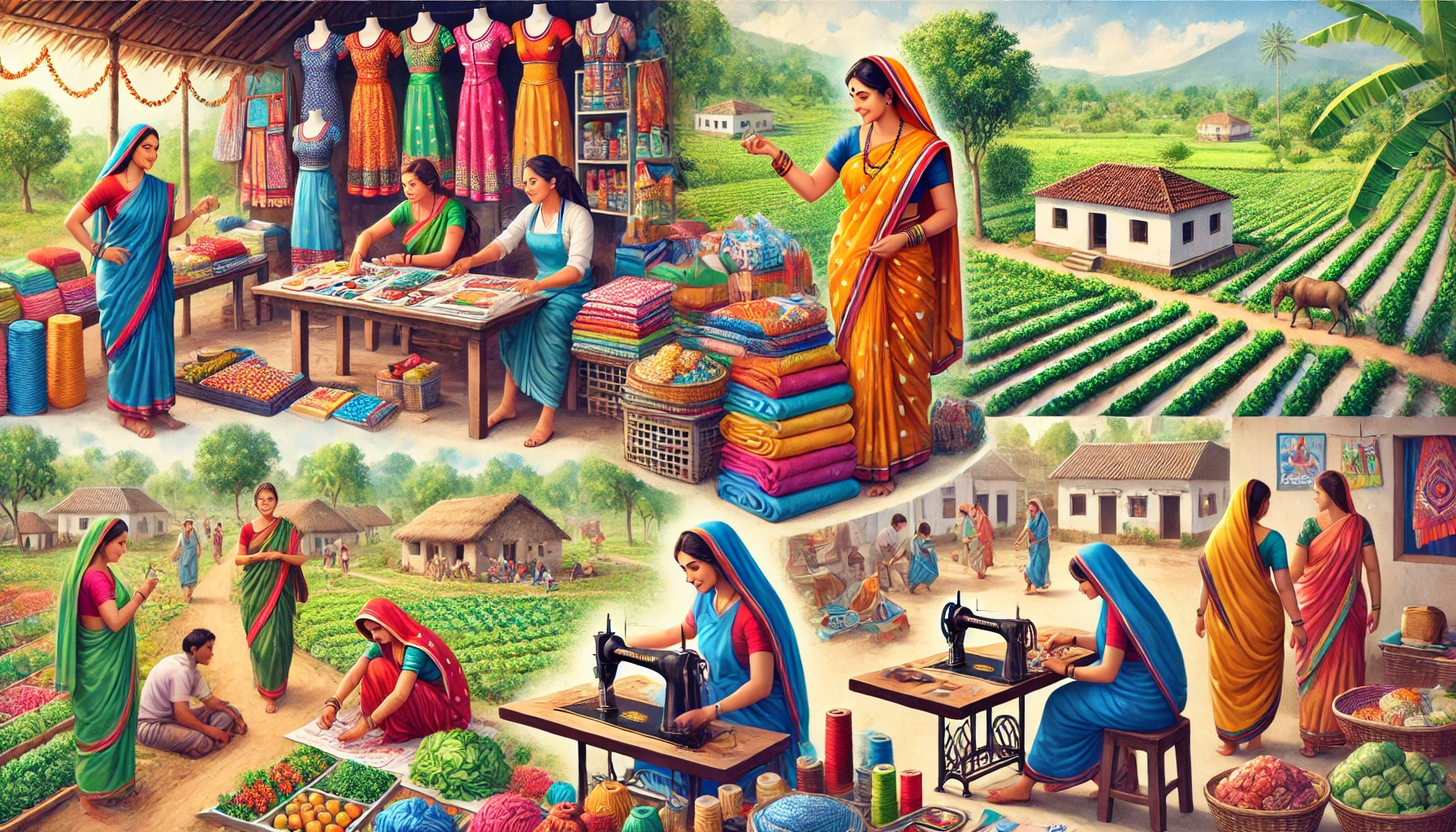Driving Economic Growth: The Role of Women-Owned Enterprises in Rural India
The World Bank's report highlights the significant economic potential of growth-oriented women-owned enterprises in rural India, emphasizing the need for targeted support and policy reforms to overcome barriers and foster entrepreneurial growth. The study underscores the critical role of women entrepreneurs in driving inclusive economic development and resilience, particularly in the wake of the COVID-19 pandemic.

The World Bank, in collaboration with the India Agriculture and Food Global Practice and the Finance, Competitiveness & Innovation Global Practice, released an in-depth report assessing growth-oriented, opportunity-driven, women-owned enterprises in rural India. Women are recognized as a pivotal yet underutilized resource for economic development, particularly in developing countries like India. This report emphasizes the critical role of entrepreneurship in women's empowerment, which leads to significant benefits for families and communities. In India, the participation of women in the labor force has been declining. Most women-owned enterprises in the country operate on a smaller scale, in low-growth sectors, and are typically financed by personal savings. Notably, 86.9% of these enterprises function without hired labor, 79% are self-financed, and 60% are in the manufacturing sector.
Despite the growing momentum of programs supporting female entrepreneurs globally, there remains a substantial knowledge gap regarding women entrepreneurs, the growth potential of their enterprises, and the constraints they face. The report maps out Growth-Oriented Women’s Enterprises (GOWE) in rural India, employing a mixed-methods research approach that includes a literature review, spatial analysis, and a primary survey of 2,400 women-owned enterprises, along with 40 in-depth qualitative interviews and focus group discussions across four Indian states: Bihar, Chhattisgarh, Maharashtra, and Tamil Nadu. The study's findings highlighted that there is a dearth of literature on GOWE, necessitating a working definition to differentiate them from subsistence enterprises and traditional Micro, Small, and Medium Enterprises (MSMEs).
Defining Growth-Oriented Women’s Enterprises
An enterprise is considered growth-oriented if it meets at least two of the following three criteria: an increase in the number of employees, growth in annual sales, and enterprise enhancement through innovation. More than 85% of rural growth-oriented women-owned enterprises are concentrated in five major subsectors: retail trade, apparel manufacturing, food products manufacturing, food and beverage services, and handloom. The report draws distinctions between women-owned growth-oriented and subsistence enterprises. Growth-oriented entrepreneurs exhibit higher autonomy, innovativeness, and risk-taking abilities, often using a mix of personal savings and formal loans to finance their businesses. These enterprises typically grow faster, are more productive, and have a higher potential to create jobs. In contrast, subsistence enterprises are often home-based, rely solely on personal savings, and show little innovation or growth potential. The study recommends policy changes to facilitate the transition of subsistence enterprises to opportunity-driven ones and to help opportunity enterprises achieve higher growth potential. Key recommendations include creating customized financial products, addressing restrictive socio-cultural factors, and providing advisory, mentoring, and networking support. The report underscores the importance of a value chain-based support approach over an individual enterprise-based approach to create a stronger network of enterprises.
Overcoming Barriers to Growth
The research identifies significant barriers to growth for women entrepreneurs in rural India. Restrictive socio-cultural norms, limited access to formal finance, and inadequate support networks are some of the major challenges faced by growth-oriented women entrepreneurs in these regions. Gender and social norms often restrict women's mobility, making it difficult for them to procure supplies and raw materials for their enterprises without relying on male relatives. Furthermore, existing financial products often do not meet the needs of women entrepreneurs, necessitating the creation of flexible, un-collateralized loans, flexible repayment schedules, and credit guarantee schemes to better signal creditworthy GOWE to financial institutions. The report also emphasizes the need for reforms at various levels, including design, institutional, and investment reforms, to foster an enabling environment for these enterprises.
The COVID-19 Impact and Entrepreneurial Resilience
The impact of the COVID-19 pandemic on growth-oriented women-owned enterprises has been profound, challenging the assumption that these enterprises are inherently more resilient. The study found that women entrepreneurs suffered significantly from the adverse effects of the pandemic, facing disruptions in supply chains, reduced demand, and limited access to markets. Despite these challenges, the resilience and adaptability of women entrepreneurs were evident in their adoption of coping strategies, such as pivoting to new products or services, leveraging digital platforms for sales, and seeking alternative supply sources. This adaptability underscores the potential for growth-oriented women-owned enterprises to contribute to economic recovery and resilience in rural India.
A Path Forward for Policy and Development
The report is part of a broader analytical effort by the World Bank to inform project design for World Bank Group-supported operations and develop recommendations for entrepreneurship support programs in India and beyond. While the research presented in this report is a significant first step in understanding growth-oriented women's enterprises in rural India, there is a need for further detailed studies to tailor programs that will empower and support these entrepreneurs effectively. The findings and recommendations of this study provide a valuable foundation for policymakers, development practitioners, and financial institutions to develop targeted interventions that can unlock the untapped potential of women entrepreneurs in rural India, driving inclusive economic growth and development.
- FIRST PUBLISHED IN:
- Devdiscourse










